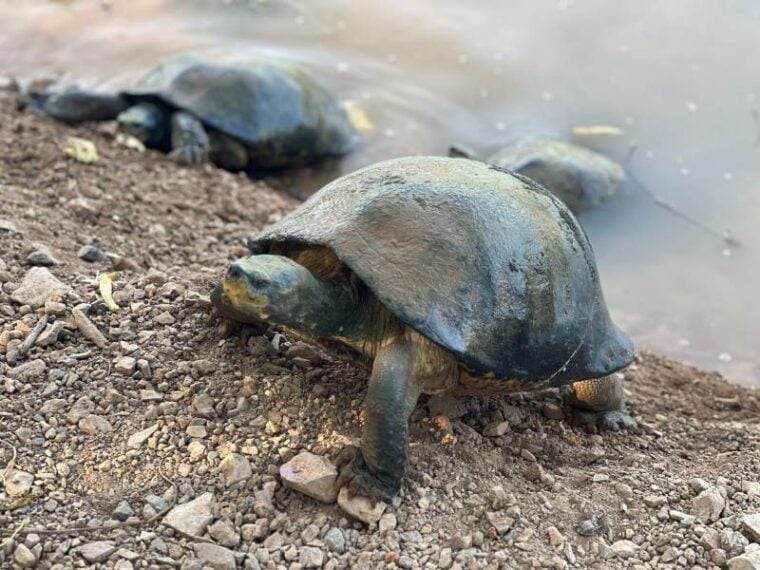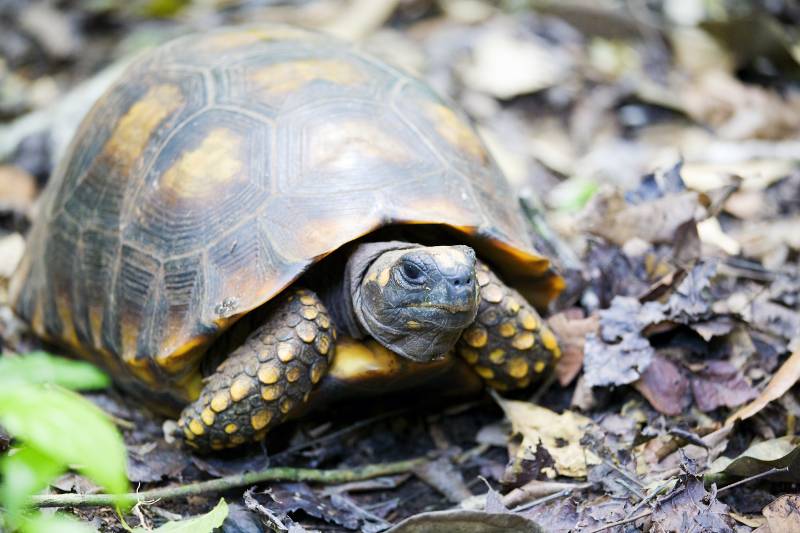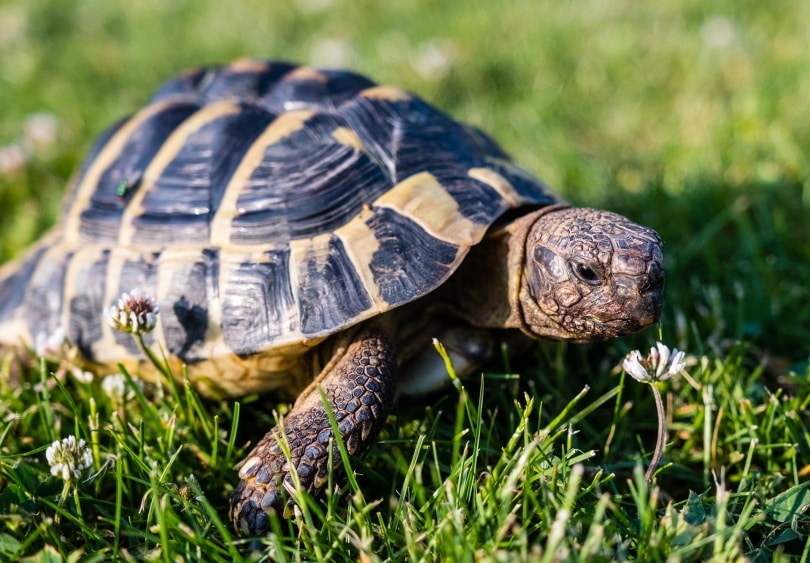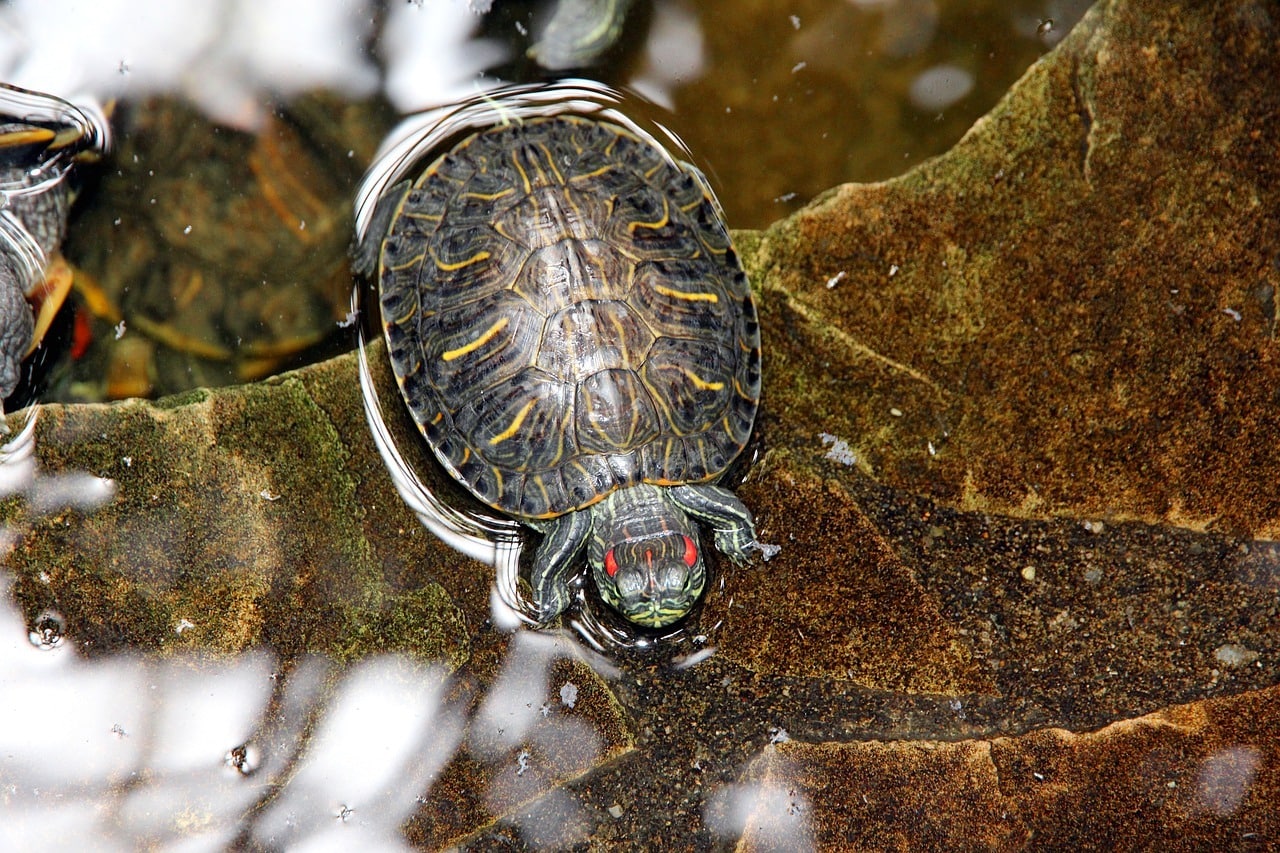
Many people know that most turtles are excellent swimmers. But what about tortoises? The simple answer to whether tortoises can swim is no. Instead, tortoises are more likely to float and drift, relying on luck to bump into a patch of dry land.
But it’s not as simple as it sounds. Let’s dive into the fascinating world of these unique creatures to understand why tortoises can’t swim and the dangers that arise from the confusion between tortoises and their swimming relatives.
Turtles vs Tortoises: The Swimming Paradox
In the eyes of many, turtles and tortoises are identical twins. After all, both are reptiles that have strikingly similar appearances. Despite the overwhelming resemblance, however, turtles and tortoises are fundamentally different when it comes to their swimming abilities. The secret lies within their physiology.

The primary physical reason turtles are equipped for water while tortoises are not is due to their appendages. Turtles boast flippers with a few claws, a perfect set of tools to propel them in water.
Conversely, tortoises have bent legs with clawed toes that closely resemble the stumpy feet of elephants. These limbs are designed for terrestrial locomotion. As you can probably imagine, they’re rather unsuitable for swimming.
Shells: Designed for Different Environments
Another significant factor contributing to their swimming capabilities, or lack thereof, is their shell. Turtles possess streamlined, lightweight, and flattened shells designed for effortless movement through water.
Tortoises, on the other hand, have heavier domed shells that inhibit safe water travel, thus demonstrating the stark differences in the design of these close relatives.

The Great Reptile Confusion
While the physical attributes of turtles and tortoises are well-defined, it is common for people to confuse the two. As we’ve already pointed out, this mix-up often arises due to their similar appearance. But another cause for confusion has to do with their sometimes-overlapping habitats.
For instance, gopher tortoises often nest around the same dunes as sea turtles, leading to an unfortunate misunderstanding. Consequently, well-meaning individuals may attempt to “save” baby tortoises by guiding them into the water, inadvertently placing them in peril.
Is It Okay to Put a Tortoise in Water?
The tragic truth is that most tortoises are likely to drown if they find themselves in water. Remember, their physical features do not support swimming, and thus, they have a high chance of sinking and struggling to resurface.
A common question is whether tortoises can float. The answer varies, depending largely on the age, weight, and luck of the individual tortoise. In ideal conditions, some tortoises can float and drift, possibly reaching the shore.
However, this does not mean that they should be placed in water, as this is a high-risk situation that, as we just learned, often leads to unfortunate outcomes.

Swimming Preferences of Tortoises
Wild tortoises are not usually fans of swimming and tend to avoid water bodies. They know their swimming skills are subpar, making a trip to the water risky. Nonetheless, they do enjoy bathing in shallow waters, which can be misleading for observers.
It goes without saying, but baby tortoises can’t swim, either. As with their adult counterparts, they need to drink and bathe. But if they end up in deep water, they will likely drown. The fact that tortoises can hold their breath for extended periods can sometimes give a false impression that they can swim.
Some pet tortoises may enjoy a splash in a non-chlorinated pool under strict supervision. However, it’s crucial to ensure this interaction is brief, safe, and in the shallow end of the pool. Chlorine is harmful to these animals, and not all tortoises will appreciate a dip in the pool.
Tips for Keeping Your Pet Tortoise Safe and Healthy
Now that you know the cold hard truth about tortoises and water, you might be wondering the best ways to keep them safe. If you’re the proud pet parent of a tortoise, you’ll find the following tips beneficial.
For starters, the most vital rule for keeping a tortoise safe is to understand their preference for land. They should have a safe enclosure that prevents them from wandering into unsafe areas, including water bodies.
They enjoy basking in the sun, so providing a spot for sunbathing is essential. Knowing their need for sun and water and how to best implement them will go a long way in keeping your tortoise safe and happy.
If your tortoise seems to enjoy a splash, create a shallow pool with clean water where they can cool down without the risk of drowning. Regular health checks and clean living conditions will also go a long way in keeping your pet tortoise safe and healthy. Always remember, they are land creatures and should be treated as such.
Now that we have the land and water conundrum cleared up, let’s talk about food. A tortoise’s diet should consist primarily of leafy greens and a limited amount of fruit. It’s worth pointing out that where the tortoise comes from can play a role in the type of diet it eats.
It’s a good idea to check with a veterinarian if you’re unsure. Or you can play it safe and stick with a purely vegetarian diet. Even tortoises that were raised on other types of food will love a green diet!
Conclusion
With their bent legs, clawed toes, and domed shells, tortoises are simply not designed to swim. They may be found near water bodies or even drinking from them, but they are land reptiles, and their ability to navigate through water is extremely limited.
The next time you come across a tortoise near a body of water, remember they are not there for a swim. Instead, they might just be enjoying a sunbath or a drink. Understanding this distinction could be the difference between life and death for these amazing creatures.
Featured Image Credit: Permsiri Yodkaew, Shutterstock








